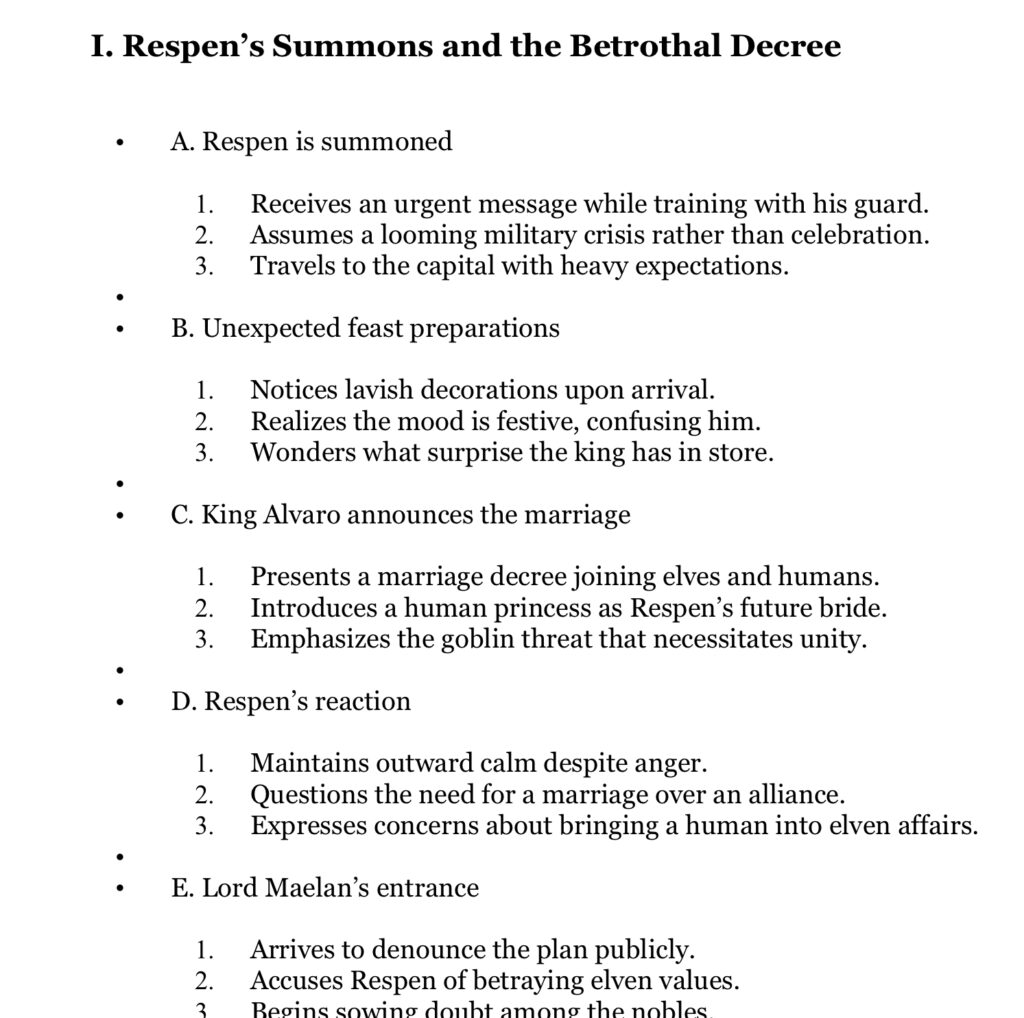When a story shows up in my head, it refuses to let me sleep or have a moment’s peace until I put it on the page. Once it takes over, the only way back to my regularly scheduled life is to write it out. Over time, I’ve figured out a way to take that buzzing, insistent idea and turn it into a finished manuscript quickly, without dragging it out for several weeks or months. If you’ve been stuck wrestling with the same book for a decade, this approach might be exactly what helps you finally finish.
Pansting
Most of the time, I prefer pantsing—writing by the seat of one’s pants. I begin with only a loose outline and start at the beginning, allowing the story to unfold on its own terms.
Even though I’m the author, my characters will always do what they wish. I may attempt to steer them, like a shepherd with a flock, but more often I feel like the sheepdog darting back and forth in an attempt to keep them on track. Inevitably, though, they wander, and I follow.
That is what I love about this method. The characters are alive, unpredictable, and full of discovery. Often, a character leads me somewhere I never anticipated, and those moments become the heart of the story. They often become the scene where I cry.
But this method takes more time, and when we’re concerned about a first quick-and-dirty manuscript to be polished later, that’s not going to work.
Plotting With a Twist
There are times, however, when speed is the priority. Perhaps I need a first draft so I can complete a paper for school, or, as happened recently, I get slapped upside the head by a story idea so insistent that it will not let me sleep until I’ve mapped it out.
In those cases, I turn to outlining, and then…not typing. Here’s the framework I rely on for plotting when speed is what matters:

- Twenty chapter-level points. These serve as the broad architecture of the book.
- A–J to A–O subpoints under each chapter. These expand the skeleton into a sequence of moments. (Fun fact: Those are EN-dashes, not em-dashes. En-dashes indicate an array.)
- Three to four points beneath each subpoint. These provide the smaller beats, ensuring I never sit down without knowing exactly what comes next.
By the time this outline is complete, I have between 60 and 80 small steps. Writing then becomes a matter of moving from one beat to the next. The story is, in essence, already built. It simply needs to be fleshed out from one smaller thing to another rather than looking at the big eventsand worrying about how you’re going to fill the time
The Secret Tool That Makes It Possible
You already have access to a free version of this, with no usages limits. Instead of typing, I speak my drafts when plotting.
One of the most powerful elements of dictation, for me, is closing my eyes, and looking through the eyes of a character. I only open them to glance at the outline, then I return to the darkness behind my eyelids. In that space, self-consciousness is gone, and I can act out the story as though I am standing inside it, inside the body of my characters. I move when the character moves, strain to see when they turn their head by turning my own, breathe when they pause…
It is no longer abstract imagining. I am moving through a world that already exists. A character might enter an alley, feel nervous, and come out the other side unharmed. It’s abstract. Or a character might step into an alley, and suddenly I am there, heart thudding, hearing the scamper of a rat, the clang of a distant trash can, the streetlights glinting in puddles left by the rain…the air carries the sour stench of trash and urine. My footsteps echo until I emerge on the other side and can hear all the cars I didn’t even notice when I was so nervous. In those moments, the act of writing transforms from telling the story to being a character withing the story, and dictation gives me the freedom to inhabit that perspective.
This isn’t to say that I don’t mentally put myself there when typing. But it’s different when your eyes are closed so you don’t see your surroundings, and when you’re standing up able to move as your character does.
On a Mac, this is incredibly simple thanks to Apple’s built-in Dictate feature, which has existed for over a decade but remains surprisingly unknown. To use it:
Navigate to Settings → General → Keyboard → Dictation.a
Choose your preferred shortcut (you pick the Control or the Command key to double click.).
Tap it twice in whatever program you’re using, and begin speaking.
The transcription is impressively accurate, though you must say “paragraph” or “quote” aloud when needed, and that can be easy to forget. The few-second delay before words appear is actually helpful, as it’s giving the software time to process rather than stumbling over real-time speech.

Dictation eliminates distractions. You are not pausing to correct typos, second-guess grammar, or edit mid-sentence. You are simply telling the story. And that is the essence of a first draft: getting the story out of your head and onto the page. A bonus for me is that I tend to speak very formally if I am not in a deliberately casual situation. Some books benefit from a more formal tone, and it is in these books that I think I sound the most like myself.
I personally draft in Apple Pages, set to a 6×9 layout with borders and a two-page spread using the font and font size I’m planning to use. This provides a truer sense of length than a simple word count. For me, seeing the story in its eventual book-like shape is both motivating and practical as readers are more likely to ask the length of a book in pages. My process is to dictate into a fresh Pages document, tidy it quickly, and then copy-paste into the formatted manuscript. It feels like instant gratificaton.
Microsoft also has an equivalent dictation program built into Word as part of its accessibility features. While my own primary experience is with Apple’s Dictate, I would imagine Microsoft’s version performs quite well. As accessibility is the reason these tools exist in the first place, they reasonably reliable and free. Why pay money for programs and layout editing programs when you’ve got options free fromt he developers that work well?
To disclose, I do also audio record myself with my phone just in case there’s a garbled spot and I can’t make it out, or my iPad dies because I forgot to plug it in like I do until it dies.
And for the record, I’ve got over 5,000 words. Tomorrow I will swing to the next branch, then the next. They’re all so close.
Why I Do Not Use AI Transcription
Naturally, you may ask whether AI for transcription is worth considering. I make it a point to test both AI options, partly so I can advise my daughter with accuracy, and partly to see where the limitations truly lie when I’m debating an AI-stan who will naturally tell me to try it and I’ll love it. They never like when I lay out my history with AI going back to when I was helping develop it back when IBM’s Watson was spoken about in Silicon Valley, but years before being unveiled publicly
AI transcription generally limits you to three to five minutes at a time before forcing you to stop, submit, and wait for it to give it to you all at once. So it has the context that opther options don’t have. I will admit that, if transcription was a stand-alone product disconnected from the generative side, I would be throwing my money at it. This could be possible by having a program work on a loop, cutting at intervals, and transcribing that while continuing to record, though this would take a lot of computing power, and the typical home machine may struggle with it.
But as it is packaged with generative AI, AI transcriptions present a temptation I consider too great. Once you are already using the it, it becomes all too easy to ask “ChatGPT, please make this better” before you start to speak your words. At that point, the AI is taking your words as an outline and is doing the actual writing for you.
For that reason, I avoid AI entirely in this process. Accessibility features like Apple Dictate or Microsoft Word’s equivalent are free, reliable, and built specifically for dictation.
Google Docs also offers voice typing, though I have not tested it myself. My reluctance stems from how heavily Google integrates AI into everything now. The pop-up suggestion that Gemini can help you “write it better” feels intrusive at best and insulting at worst. I use Docs only for beta readers.
Most importantly, if a writer relies on AI for drafting or rewriting, transparency matters. Concealing it undermines both personal integrity and trust within the creative community and leads to witch hunts since, believe it or not, consumers do like to know what they’re supporting. After all, how many of us walked from the Harry Potter fandom when JK Rowling showed herself to be a bigot?
Keep Pandora’s box closed on this.
But I Still Prefer the Organic Path
Even with the efficiency of outlining and dictation, I only use this method about 20 percent of the time, for those stubborn stories that won’t leave me along. Most often, I return to the slower, looser, more exploratory way of writing.

It is less efficient, yes, but infinitely more enjoyable. Dictation and outlining are like sprinting down a highway. You’ll reach your destination quickly, yes, and sometimes you need to do so, but you’ll also risk missing out on so much along the way. Pantsing is like wandering winding trails with your characters, discovering unexpected turns and hidden places along the way.
That is where the magic usually lies for me.
And sometimes that meandering drive is still over too soon. That, by the way, is the bridge I drive on twice per day multiple times per week. I can’t complain when traffic is slow and I turn my head and see that view, and lush trees on both side of the river.
So…
For writers looking to accelerate their first draft, a detailed outline combined with dictation will get you across the finish line, quickly. Twenty chapter points, expanded into ten to fifteen small beats, then fourty to sixty mini means, can transform the process into manageable steps and seeing items check off is motivating. Speaking the story rather than typing it can help you bypass self-consciousness, second-guessing, and the endless urge to edit.
But remember that speed is only one measure of success. Sometimes the best writing happens when you let the characters lead you off the planned path. The important part is to keep moving forward, whether in long, wandering strides or in swift, dictated bursts. And sometimes you just want to get that unwelcome asshole off your couch.